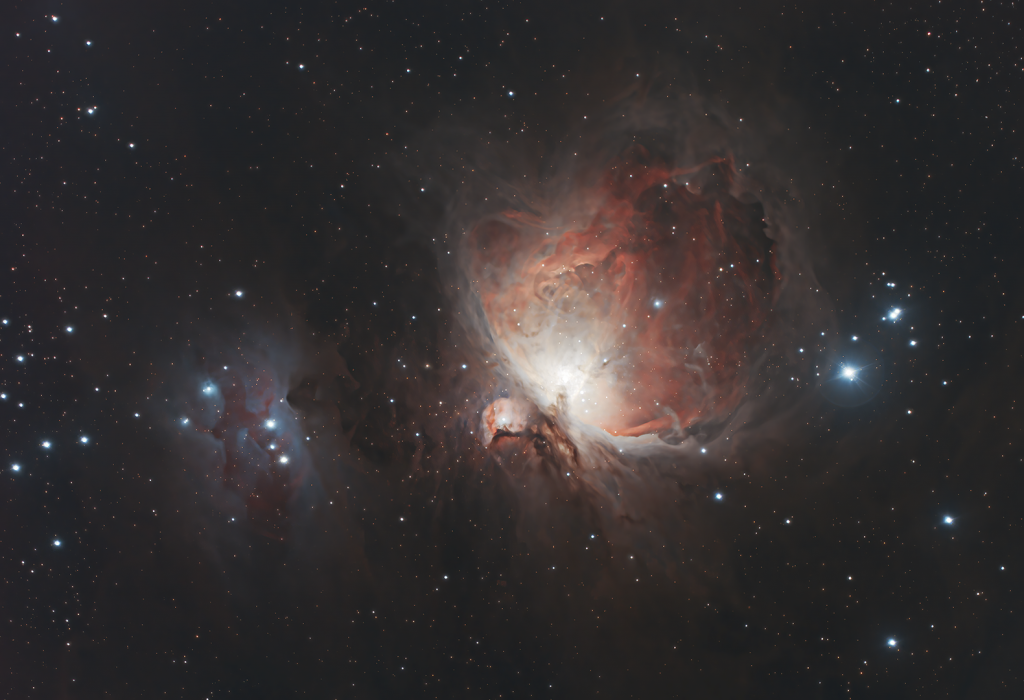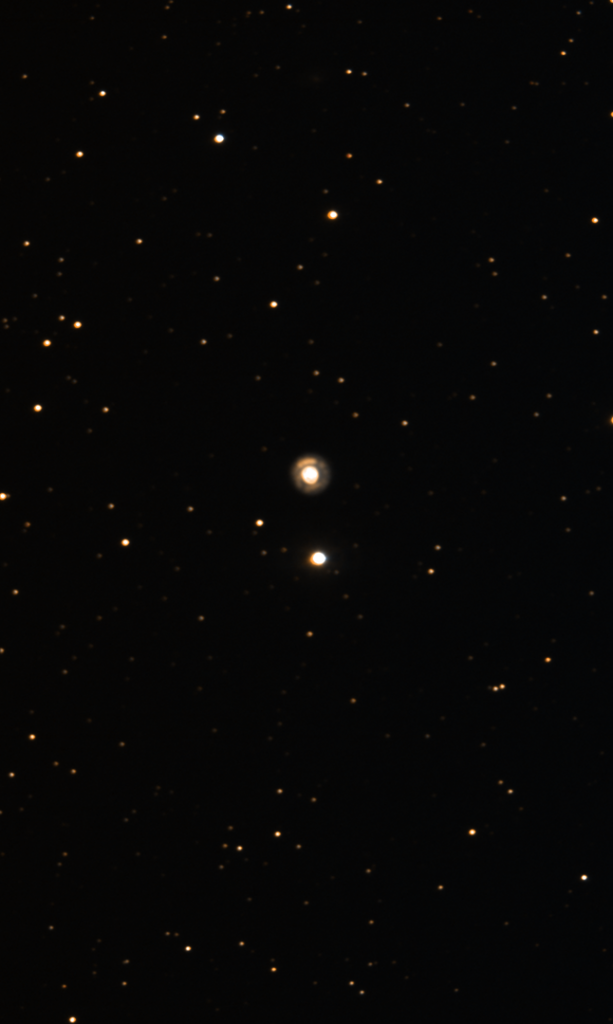I was at the River Ridge Observatory under a first quarter Moon. I had one rig shooting with a narrowband filter oblivious to the moonshine. I had a second rig set up for my DSLR but what to shoot with that bright of a Moon in the way?
Occultations! Serendipitously, I found that the leading dark edge of the Moon would occult, or pass in front of, two fairly bright stars at 9:05 PM just 30 minutes away. I set the remote to take continuous one second images starting at about 9:02 and let it run for two or three minutes 9:05 to be safe. I got a total of about six minutes of single one second shots.
I used Lightroom to process and Photoshop to make a video and here is the result at ten frames or ten seconds per second. You can see the Moon creep up on and blot out the two stars almost at the same time.


